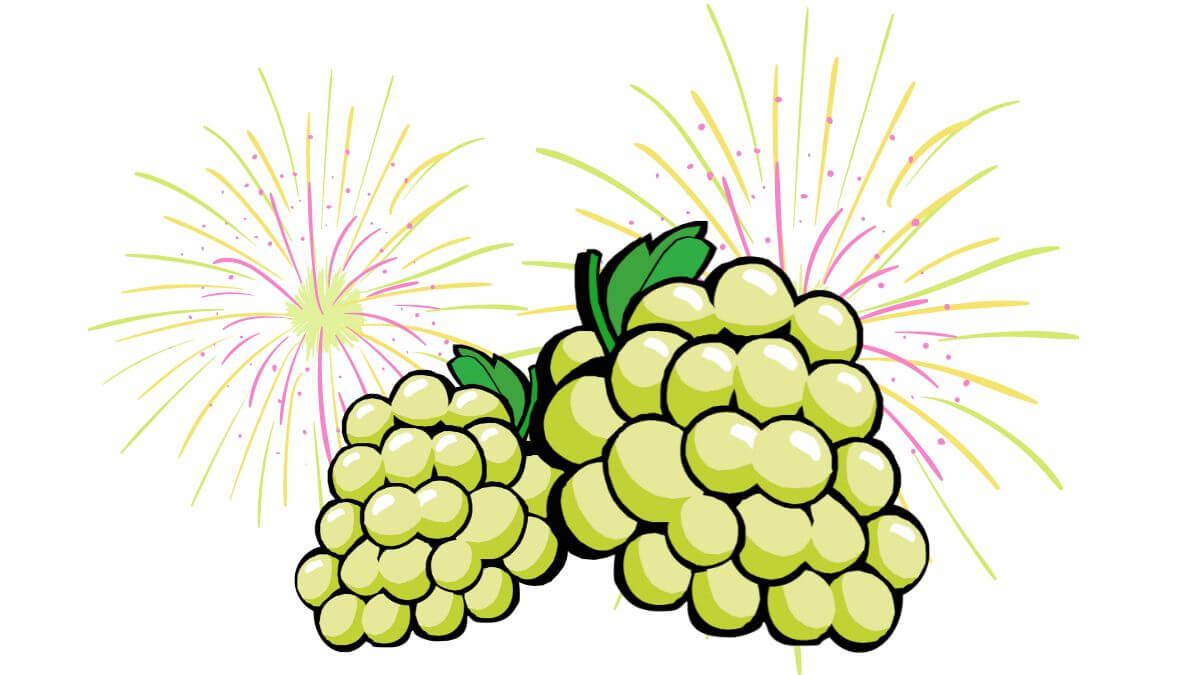If you want to learn about this tradition, keep reading.
The tradition of eating twelve “lucky” grapes began to be widely observed in Spain on New Year’s Eve in 1909, due to a surplus grape harvest in Alicante. However, the custom of eating grapes and toasting with champagne to bid farewell to the year already existed among Spanish bourgeoisie in the 19th century.
According to tradition, a table is set with 12 grapes in front of each diner, symbolizing the 12 months of the year, and they must be eaten with each stroke of the clock.
In other countries, there are also typical foods to welcome the new year.
In Greece, they usually bake a cake called Vassilopitta, inside of which a gold or silver coin is placed. The person who finds the coin in their slice will be the one with the most good luck in the upcoming year.
In Italy and some South American countries, it is a tradition to eat a dish of stewed lentils after the midnight chimes to attract prosperity and fortune in the coming year.
In Brazil, it is a tradition to dress in white on the last night of the year. The color white symbolizes happiness and purity.
In Mexico, Peru, and Venezuela, it is a tradition to burn an old rag doll. Inside, this doll will be filled with fireworks and firecrackers so that when it is set on fire, it makes noise and releases colors. This symbolizes putting an end to the bad moments of the year and attracting the good experiences expected in the upcoming one.
Happy New Year 2021!



